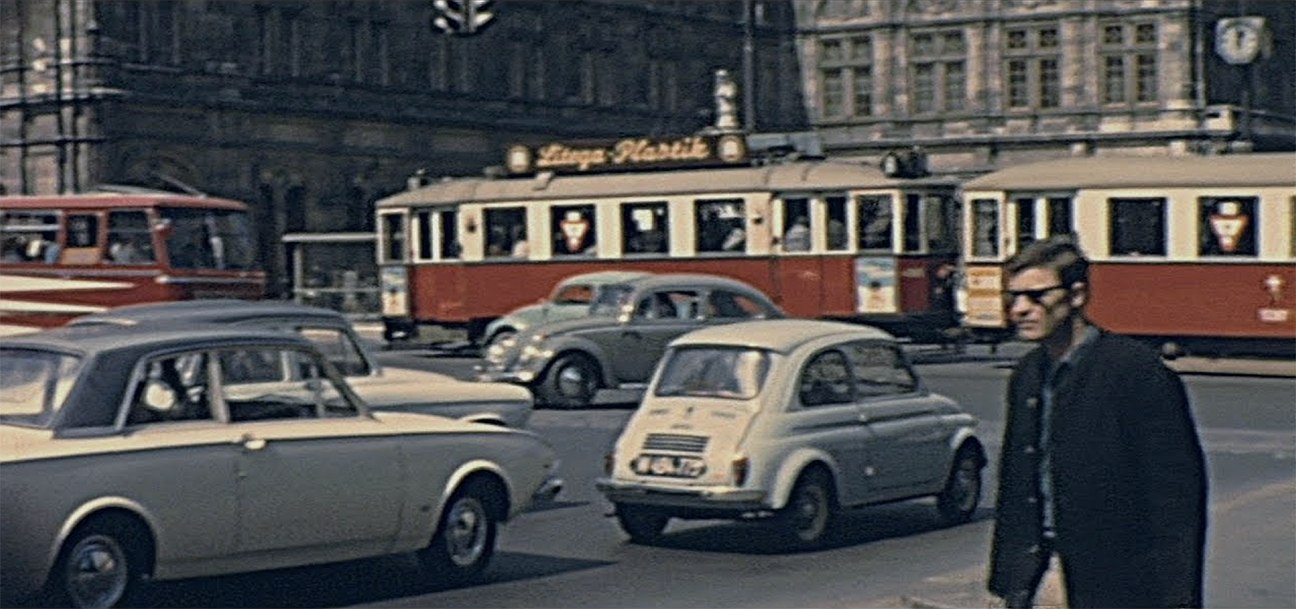 At the age of five I moved to Vienna, Austria—the heart of the Austro-Hungarian political, economic, and cultural Empire—and ever since then, I have been fascinated by urban environments. Simply stated, the bigger the better, although that doesn’t capture the complexities that I have come to enjoy when living in or visiting metropolises around the world.
At the age of five I moved to Vienna, Austria—the heart of the Austro-Hungarian political, economic, and cultural Empire—and ever since then, I have been fascinated by urban environments. Simply stated, the bigger the better, although that doesn’t capture the complexities that I have come to enjoy when living in or visiting metropolises around the world.
Vienna
Vienna in the mid 1960s was a city whose many buildings displayed scars of the Second World War. Not that damage was necessarily visually evident (although “nearly a quarter of its building [were] partially or completely destroyed”), but I remember that many of the facades were dark and worn. Like the northern city of Berlin in Germany, reconstruction was on the way, especially after 1955 when Vienna regained its independence and sovereignty from the American, British, French and Soviet Allied Occupation Forces that had subdivided the city into post war political zones.
 Image 1: Panorama of Vienna as depicted in the Encyclopedia of the Nuremberg Chronicle of 1493
Image 1: Panorama of Vienna as depicted in the Encyclopedia of the Nuremberg Chronicle of 1493
By the time my family and I moved to Switzerland, Vienna was rapidly becoming one of the most elegant and contemporary cosmopolitan European cities. International businesses and organizations were moving their headquarters to Vienna, new subway lines were being excavated, many facades of public buildings were being cleaned, and the promise of a unified Europe was on the horizon. All of this took place while the border between Austria and the Eastern Bloc (the Iron Curtain) was less than 50 miles to the east of the city.
 Image 2: Video clip of Vienna in 1967 (Footageforpro.com)
Image 2: Video clip of Vienna in 1967 (Footageforpro.com)
Urban monuments
As a kid, and with the stature of a child, I marveled in front of the towering and stately public buildings and monuments in the city center; edifices that to me looked like decadent pastries made out of reinforced marzipan; delicacies that were so much part of the culture of Gemütlichkeit of the famous Viennese Café-Konditorei. The city’s architecture inspired me and later, from these experiences, I came to understand the importance of reflecting on the historical urban moments of the capital’s life.
As an adult I became acquainted with the early Celtic settlements, still in place under the modern city below the traces of the Roman castrum (military camp) which is now Vienna’s historic center. As the culmination of this history, the new social order of the 19th century was expressed in the ostentatious yet beautiful Ring Strasse built on the dismantled inner ramparts of the old city.
 Image 2: Google Images -architects Josef Hoffmann, Adolf Loos, and Otto Wagner
Image 2: Google Images -architects Josef Hoffmann, Adolf Loos, and Otto Wagner
 Image 3: Google Images -painters Egon Schiele (self-portrait), Gustave Klimt, and Oscar Kokoschka (portrait of Adolf Loos)
Image 3: Google Images -painters Egon Schiele (self-portrait), Gustave Klimt, and Oscar Kokoschka (portrait of Adolf Loos)
Geniuses of the turn of the century
Vienna was able to twice halt the Ottoman army at these ramparts; the city survived the Great Plague of 1679, and continues to glorify its multicultural contributions. The city inspired artistic creativity expressed through architects (Josef Hoffmann, Adolf Loos, and Otto Wagner), artists (Egon Schiele, Gustave Klimt, and Oscar Kokoschka), the creation of a design movement (Sezzessionstil), music (Arnold Schoenberg), philosophy (Edmund Husserl and Ludwig Wittgenstein), the birth of psychoanalysis (Sigmund Freud), and writers (Arthur Schnitzler, Hugo von Hofmannsthal, and Karl Kraus).
 Image 4: Google Images -Arnold Schoenberg, Edmund Husserl and Ludwig Wittgenstein
Image 4: Google Images -Arnold Schoenberg, Edmund Husserl and Ludwig Wittgenstein
 Image 5: Google Images -Sigmund Freud, Arthur Schnitzler, Hugo von Hofmannsthal, and Karl Kraus
Image 5: Google Images -Sigmund Freud, Arthur Schnitzler, Hugo von Hofmannsthal, and Karl Kraus
These key episodes are poignantly described by historian Carl Schorske in his famous book Fin-De-Siècle Vienna where he explores the city’s life at the dawn of the 20th century.
Cities as palimpsest
All of this was unknown to me as a child, and yet there was an underlying flair, something unique in the city’s fabric that I could sense, perhaps leading me to eventually focus on the multiple layers that would form my thinking about the sensuality of cities.
Later, I was fortunate to travel around Europe, and during my university studies I ventured to the new continent and lived twice in New York City. Later, as a more mature professional, I visited the subcontinent of India, discovering some of the oldest cities in the world. Over the years I’ve encountered large urban settings such as Hong Kong, Kuala Lumpur, New Delhi, Singapore and Tokyo.
For me, each city is a spatial palimpsest where ancient traditions and contemporary know-how form a fascinating and contradictory urban tapestry. Of course, I have my favorites cities that are a little like home for me (Hong Kong, New York, Paris, Venice, and Vienna, for sentimental reasons); but above all, each city is a place where I leave something of myself to selfishly retrieve when I return during the next visit.
I like cities, they are memories that I can build.
Unbuilt Architecture Projects/Competitions
Architectural Education: Research on unbuilt projects and competitions